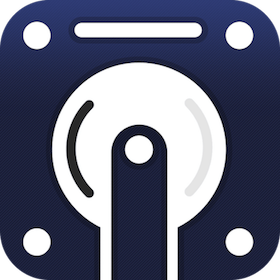Putting a file in the trashcan means it's marked for deletion. But until you actually empty the trash, it'll sit there — just like a trashcan in real life. It's easy to let those files build up until you have hundreds of megabytes — gigabytes, even, just waiting to be deleted (or discovered if anyone has access and decides to snoop). So if you want your precious drive space back, and you want to make sure what you've deleted is really deleted, empty the trash.
How to empty the trash on your Mac
- Click and hold on the Trashcan icon in the Dock.
- A popup will appear that says Empty Trash. Select it. (You can also empty the Trash from any open Finder window by holding down the command and shift keys and pressing delete.)
If you open it you will find, that this is where all those corrupt files are. So, just delete everything inside the.Trashes folder and then Empty your Recycle Bin. If you now reconnect your NTFS drive in Mac OS X you should see an empty trash just like mine. Jul 19, 2012 Mac OS X can sometimes throw permissions errors when trying to delete files or empty the Trash. The most common variations of the errors are usually “Operation cannot be completed because the item “File” is in use” or “because the file is locked”, sometimes you can get around this by just quitting open applications or rebooting the Mac, but if you don’t want to do either you can.

How to securely empty the trash on your Mac
Emptying the trash is usually sufficient to get rid of the files you don't want anymore. But emptying the trash doesn't really destroy the files: They remain on the hard drive, marked for being overwritten the next time your Mac needs the space. As a result, some deleted files can be recovered using disk recovery software.
Sometimes you may delete files that are particularly sensitive: Financial records, for example, intimate photos, or other data you absolutely don't want anyone to get their hands on, under any circumstances.
Apple has considered this and has provided a Secure Empty Trash option as well. Secure Empty Trash overwrites the deleted files with what Apple calls 'meaningless data.'
Secure Empty Trash takes longer, but provides, as the name implies, a more secure form of file deletion. Use at your own discretion.
- Click and hold on the Trashcan icon in the Dock.
- Hold down the command key and click on the Trash. Empty Trash will change to Secure Empty Trash. Select it.
- To do it from any open Finder window, click on the Finder menu and select Secure Empty Trash.
Bonus Tip: Make Secure Empty Trash the default behavior
Use this tip if you'd like to make sure that your Mac securely deletes files every time you empty the Trash.
- Open the Finder.
- Click on the Finder menu.
- Select Preferences.
- Check Empty Trash Securely.

Mac Os Empty Trash External Drive Windows 7
We may earn a commission for purchases using our links. Learn more.
Mac Os Empty Trash External Drive Windows 10
exposure notificationNational COVID-19 server to use Apple and Google's API, hosted by Microsoft
The Association of Public Health Laboratories has announced it is working with Apple, Google, and Microsoft to launch a national server that will securely store COVID-19 exposure notification data.